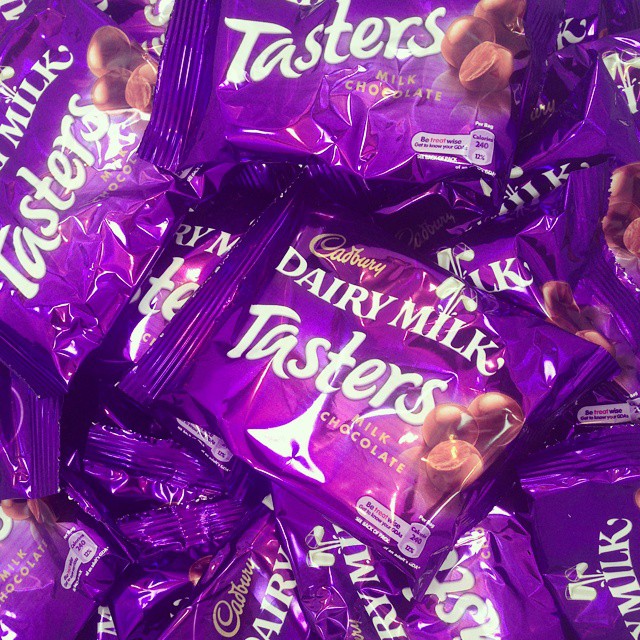If you ever find yourself standing in a British newsagent or convenient store, you’ll find it hard to miss the colorful smorgasbord of candy bars splayed out before you. Or “chocolate bars,” as the folks of England, Scotland, Wales and Northern Ireland would call them.
The selection is vast and, as the culture dictates, it’s nearly impossible to pass the shiny wrappers and vaguely kitschy logos without snatching (at least) one up for yourself. If you’re stopping at a friend’s for a visit and a cup of tea, better bring a bit of chocolate. When the grandbabies come over, stock up. Long train journey ahead of you? Grab a couple bars to treat yourself. It’s how things are over there.
And there are plenty of brands to choose from. Like Malteasers, which are airy malt balls covered in shiny milk chocolate. Or Terry’s Chocolate Orange, designed to be “whacked and unwrapped” and then enjoyed one “segment” at a time. Smarties—made by Nestle—also get plenty of air time as pastel-colored chocolate buttons particularly appealing to young ones. But the loveable, boy-next-door, prom king of chocolate treats crown has to go to Cadbury’s, which not only dominates shelf space but which also has a strong foothold historically and culturally.
They’ve been around since 1824, when 22-year-old John Cadbury began selling cocoa and drinking chocolate from a small shop in Birmingham, England. It blossomed into a family business involving John’s brother and eventually his sons, and the cocoa powder product they sold had to be tweaked with starches like potato flour and sago (a starch that comes from tropical palm stems). Big improvements were made in 1866 when the Cadburys started using a cocoa press that removed some of the not-so-tasty cocoa butter from the bean and resulted in a less gruel-ish, pure cocoa essence—the predecessor of the cocoa we know and love and are shamelessly addicted to today.
Much like today’s movement toward eating pure, simple foods, the Parliament of mid- to late 1850s was concerned with food items being messed with and altered from their natural state. Epitomizing being in the right place at the right time, Cadbury’s cocoa essence was revered for its purity and sales boomed, leading the small chocolate business to become a worldwide company. Thank you, Parliament, for making pure foods your business.
Stealing the Cadbury spotlight is the Dairy Milk line of bars, which originated in 1905 with a straight up and down, old fashioned milk chocolate bar famous for its glass-and-a-half of milk per half-pound of chocolate. Variations of the original include the Fruit & Nut—introduced in 1928—which provides a delightful mouthful of chewy raisins, crunchy almonds and the creamiest milk chocolate. Whole Nut was put on the market in 1933 and feels like a responsible, adult choice with its simple composition of hazelnuts and chocolate. Things got funkier in 1976 when Cadbury launched its caramel Dairy Milk bar which drizzles and leaks creamy caramel from its center. Today’s Marvelous Creations bar is a disco in your mouth, popping with snapping candy (think Pop Rocks), chewy bits of jelly beans and finishing with the classically creamy Cadbury milk chocolate.
Like lots of worldwide mega-brands, Cadbury’s advertising department doesn’t disappoint and hasn’t for a long time. In 2007, their new in-house production company called “Glass And A Half Full Productions” launched a series of commercials that have earned millions of YouTube hits and cleaned up advertising awards. Here are a couple best-of-the-bests:
Not to be overlooked is the prize jewel of Easter baskets in the western world: The Cadbury Crème Egg. They make about 47 million of them each year! Whether you enjoy the gooey, saccharine-sweet, tooth-ache-inducing egg yourself or find it all to be a bit much, you have to admit that you’re probably going to have at least one during the springtime season when they’re sold in stores. No matter how many times you peel away the metallic wrapper and break through the chocolate shell with your teeth, there’s just something about that drippy center that continues to feel novel and somehow irresistible. Plus, it’s fun to think about how they’re made. If you’d like to quell your curiosity, check out the video below. If you prefer to keep the mystery alive, keep on movin’!










